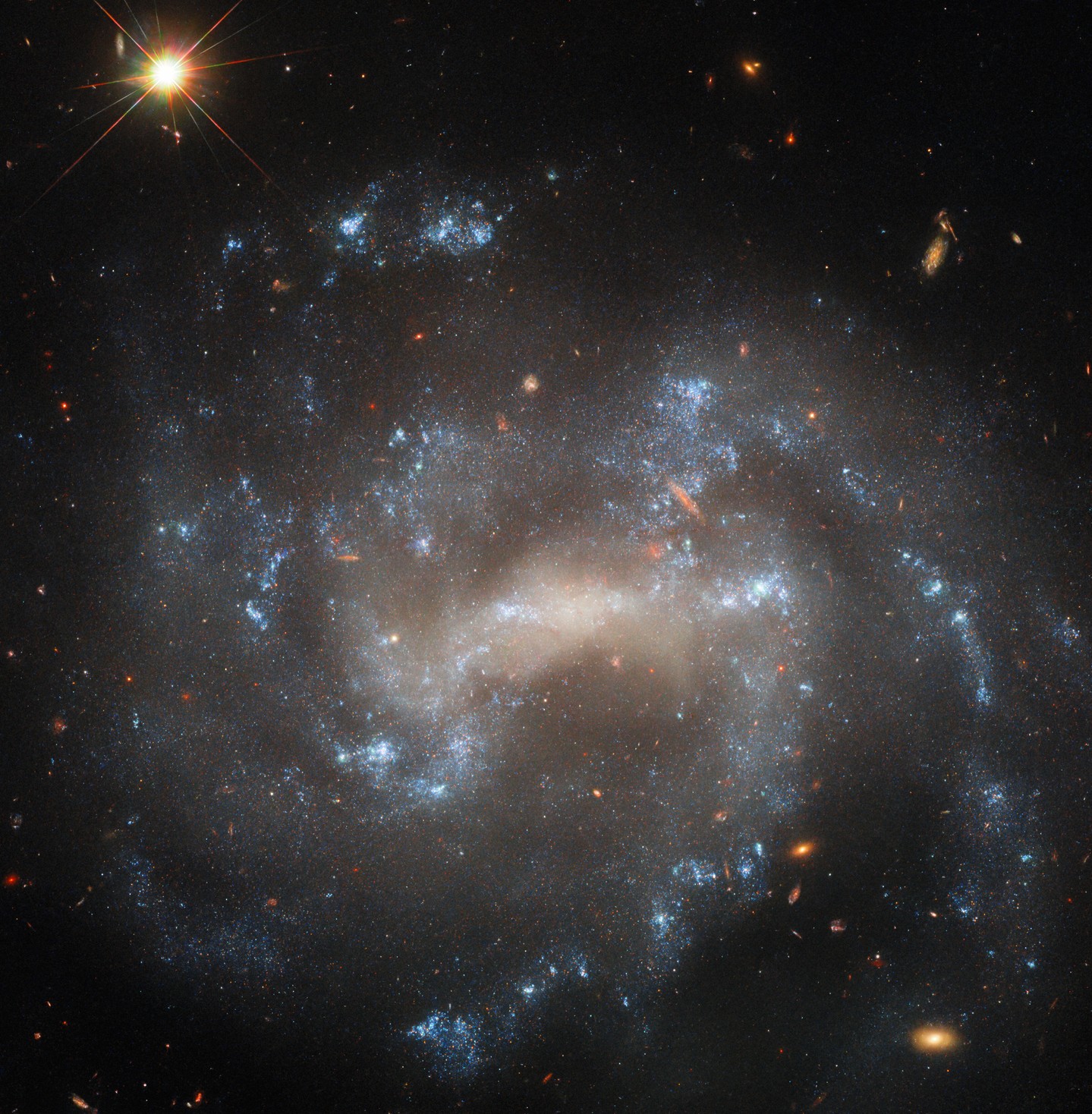- Observing distant galaxies helps understand stellar death through core-collapse supernovae.
- Studying supernovae like those in galaxy UGC 5460 reveals important data about star life cycles.
- Insights from supernovae inform both astrophysical theories and cosmological studies.
- The role of observatories, such as the Hubble Space Telescope, in gathering data on supernovae.
- Implications of stellar death on understanding organic compounds and potential life in the universe.
When distant galaxies light up with supernovae, these cosmic fireworks illuminate more than just the night sky; they reveal critical insights into the death of stars. Galaxies like UGC 5460, currently monitored by the Hubble Space Telescope, offer a unique perspective on the life and death of stars. The study of supernovae, especially core-collapse types, enriches our comprehension of the universe and the elements essential for life as we know it.
Observing galaxies like UGC 5460 provides key information about core-collapse supernovae. These events occur when massive stars exhaust their nuclear fuel, causing their cores to collapse under gravity. This collapse is so rapid and intense that it results in a massive explosion. By studying such events, scientists can piece together a star’s life cycle and understand what occurs during its final moments. Core-collapse supernovae, such as SN 2011ht and SN 2015as, give vital clues about the processes leading to these violent deaths and what remains after the explosion.
Galaxies are vast, cosmic laboratories where a variety of stellar processes can be observed. The recent supernovae in UGC 5460 are invaluable in testing existing scientific theories. Analysis of their light curves, spectra, and the remnants they leave behind allows astrophysicists to refine models of star formation and destruction. These findings are crucial for understanding not only the nature of massive stars but also the origins of the cosmic elements scattered throughout the universe. The heavy elements produced in supernovae explosions, such as iron and nickel, play a fundamental role in forming planets and possibly life itself.
The importance of space observatories such as the Hubble Space Telescope cannot be overstated. These tools enable detailed observation and data collection from distant galaxies. Using sophisticated imaging and spectroscopy, Hubble observes light emitted as stars die, providing data over a wide range of the electromagnetic spectrum. With each targeted observation, Hubble deepens our understanding of phenomena like supernovae. This information is critical not only for astrophysics but also for cosmology, as it sheds light on the universe’s expansion and evolution.
Understanding the aftermath of stellar death also has implications beyond the simple study of star life cycles. The spread of heavy elements across galaxies is crucial for the formation of organic compounds. These compounds are the building blocks of life, suggesting that the death of stars could influence the emergence of life elsewhere in the universe. By examining supernovae such as those in UGC 5460, scientists can gather clues about the conditions needed for life to develop on other planets.
Thus, observing galaxies and their violent stellar endings through supernovae tells a much broader story. It is a story of creation and destruction, of elemental born from the death throes of massive stars, and the processes that enrich the universe, making life possible. As research continues to unlock the secrets of these celestial events, our understanding of our own origins and the universe in which we reside deepens with each discovery. The study of distant galaxies and their contribution to cosmic knowledge cannot be understated, paving the way for future breakthroughs in both astronomy and the pursuit of understanding life’s potential throughout the cosmos.
*****
Source Description
What can other galaxies tell us about the death of a star?
@nasahubble @hubbleesa is observing galaxy UGC 5460 to collect data about two recent supernovae: SN 2011ht and SN 2015as. These were both examples of a core-collapse supernova, when a large star runs out of fuel and collapses under its own gravity!
Source: @nasa


